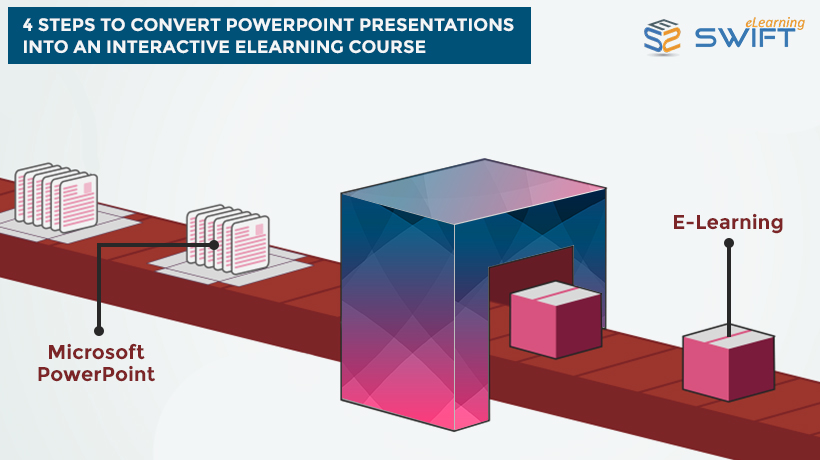Steps to Convert PowerPoint (PPTs) into Interactive e-Learning Courses
Corporate training has evolved over the years and eLearning has catered its part by helping it immensely. Many organizations are taking a step forward to implement digital learning as their training strategy as opposed to instructor-led training. Having said that, the Learning and Development Managers have to adapt rapid eLearning for immediate training needs, and converting PowerPoint to eLearning courses can be the smart move instead of developing the content from scratch.
With the arrival of HTML5 authoring tools, eLearning conversion for multi-device learning has become relatively easy. Nonetheless, we have to use sound instructional design strategies to redesign the existing training material to make eLearning courses more dynamic, engaging, and interactive.
In this blog, we will walk you through the step-by-step procedure to convert ppt to an HTML5 eLearning course that can be uploaded in a Learning Management System.
Step 1: Sequence and Structure of the Content
Analyze the content and define learning objectives. Amongst all the PowerPoint presentations that are available, identify the list of slides you want to convert. Arrange those slides in a logical flow and further divide the topics according to the requirements and make sure the entire flow aligns with the learning objectives. Proper content sequencing helps you come up with the course structure aligned with the learning outcomes.
Step 2: Clear the Gaps in the Content
PowerPoint presentations are designed accordingly to assist with instructor-led training. Only the core information will be included in them and the details provided by the instructor in the form of anecdotes, examples, and so on will be missing. Figure out the content gaps, list them, and send it to the subject matter expert (SME) for more clarity on the missing content.
Step 3: Frame Instructional Strategies and Choose the Interactivity Level
Now it’s time to apply the instructional strategies and media to the custom eLearning courseware development.
Instructional design strategies are the soul of any eLearning courses and they do not seem to reflect in PowerPoint presentations. Deciding to teach the subject in the eLearning course include varied options like scenarios, simulations, etc., which can be used according to the need of the learners. In this stage, we decide the audio and visual strategies that will be embedded in the eLearning course. Once we are done with these implementations the eLearning interactivity level has to be chosen.
Step 4: Select the Right Rapid Authoring Tool
No one size fits all. Similarly, a single authoring tool cannot fulfill all the requirements. There are many authoring tools available in the market but not every tool suits to fit your requirements. Don’t just choose the tool by trial and error method; instead, take time to research all of the options that are available and chose the one that ultimately meets your needs. Once you publish the course, test it on various browsers and devices to check the performance.
Conclusion:
To serve the perfect dish you mainly need to come up with a right recipe that includes a mixture of instructions and ingredients and above all you need a chef who does this. Similarly, you need expertized outsourcing that has the team of instructional designers and expertise to design and develop eLearning and deliver the custom elearning service in the best possible way you want.
We at swift can help in designing your learning needs and bring you the best eLearning solutions in a cost-effective manner.
Our Services: eLearning Services, Convert PPT to eLearning, eLearning Localization Services



Leave a Reply
Want to join the discussion?Feel free to contribute!